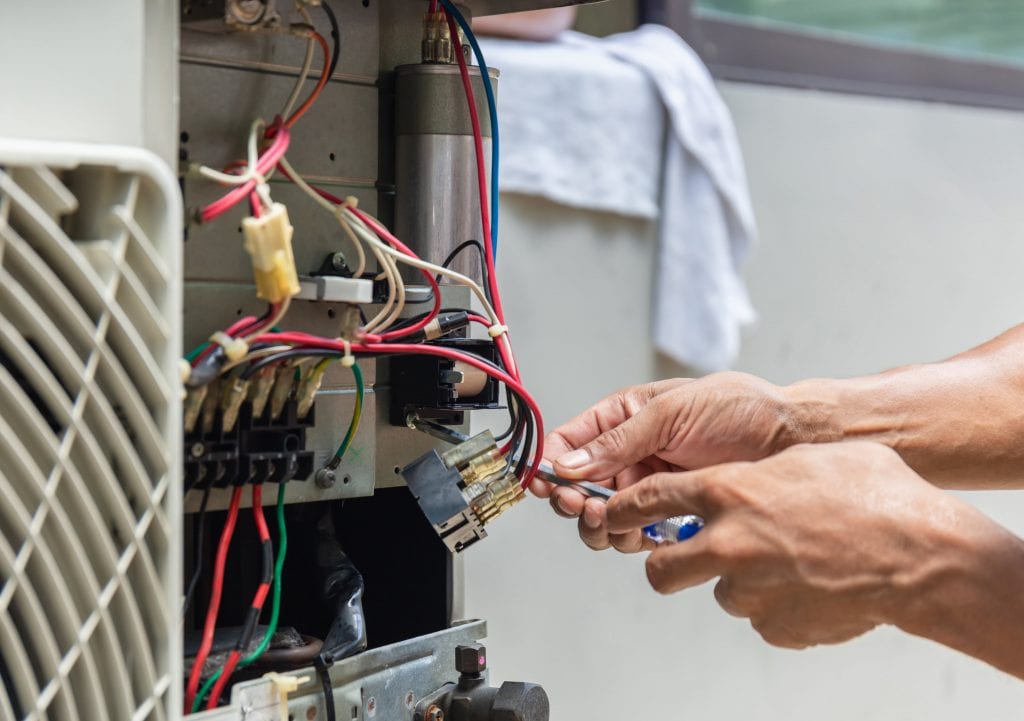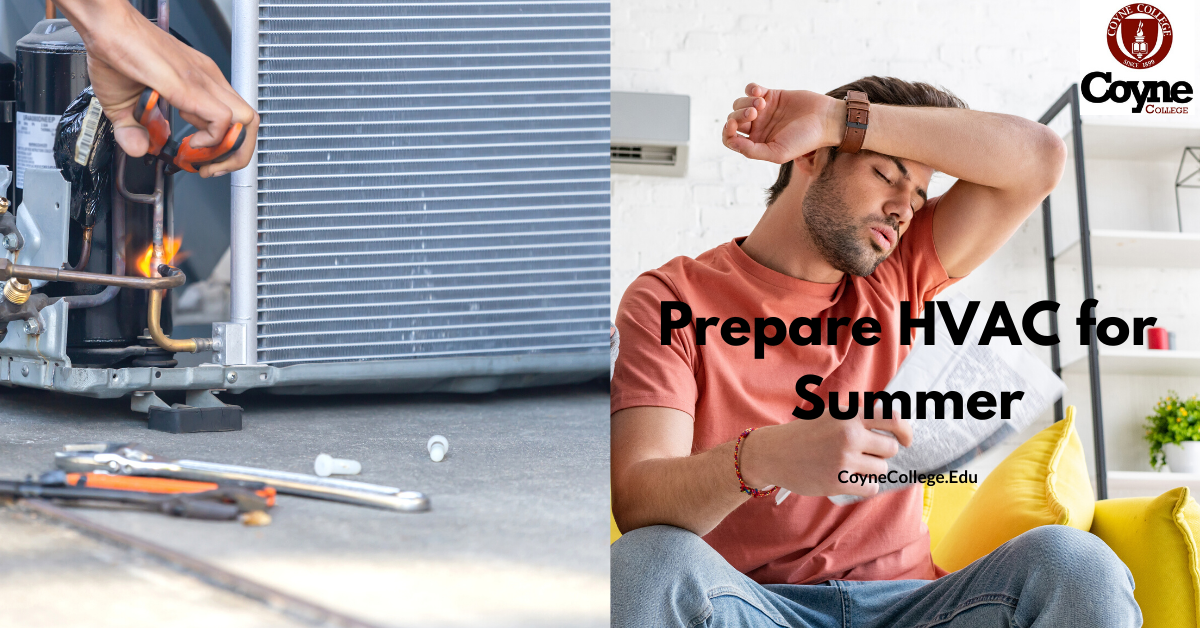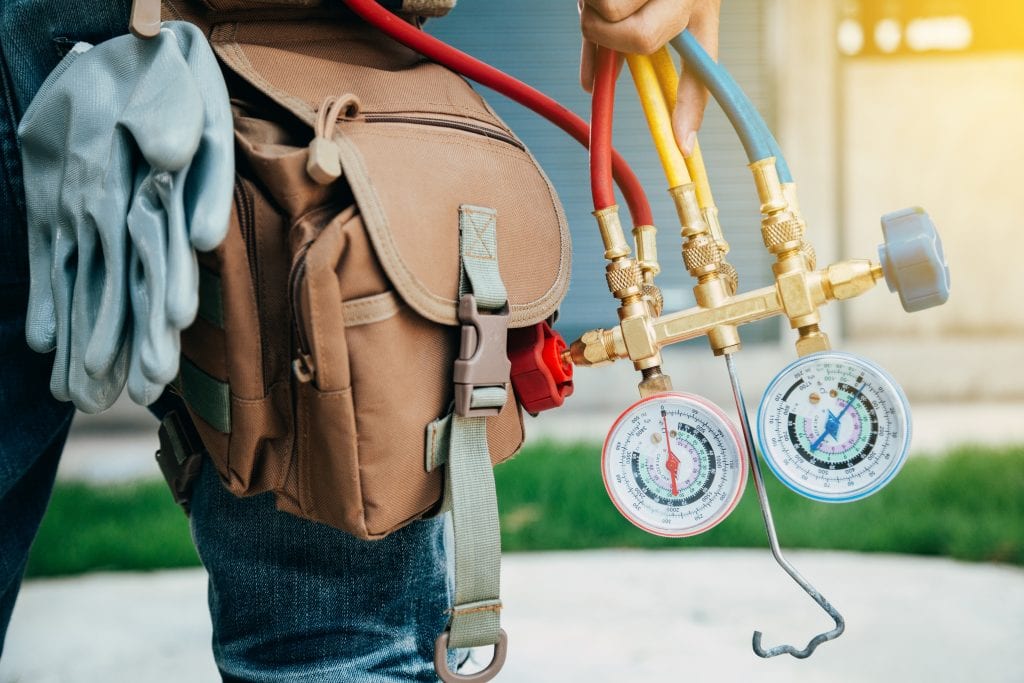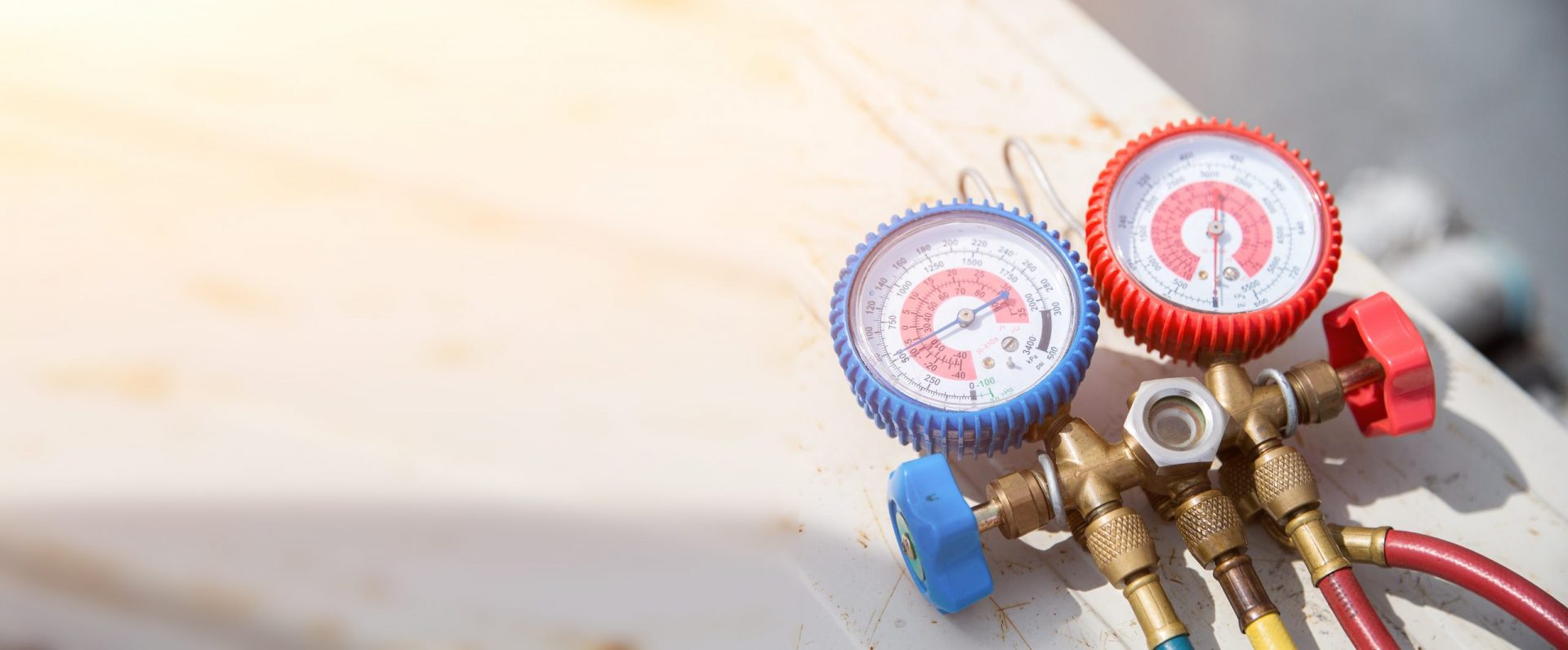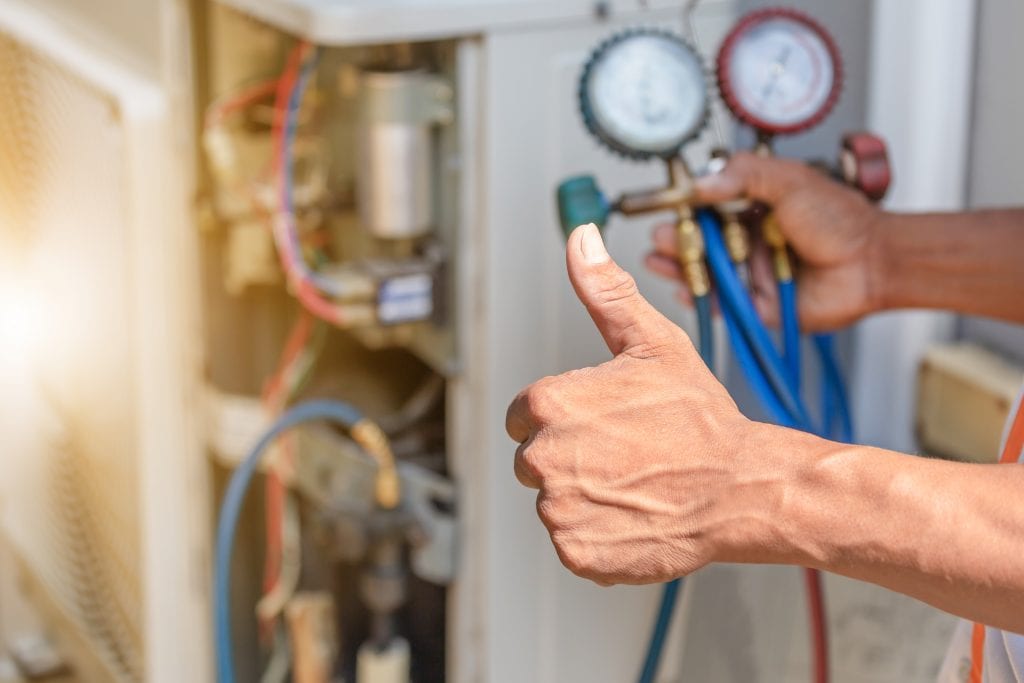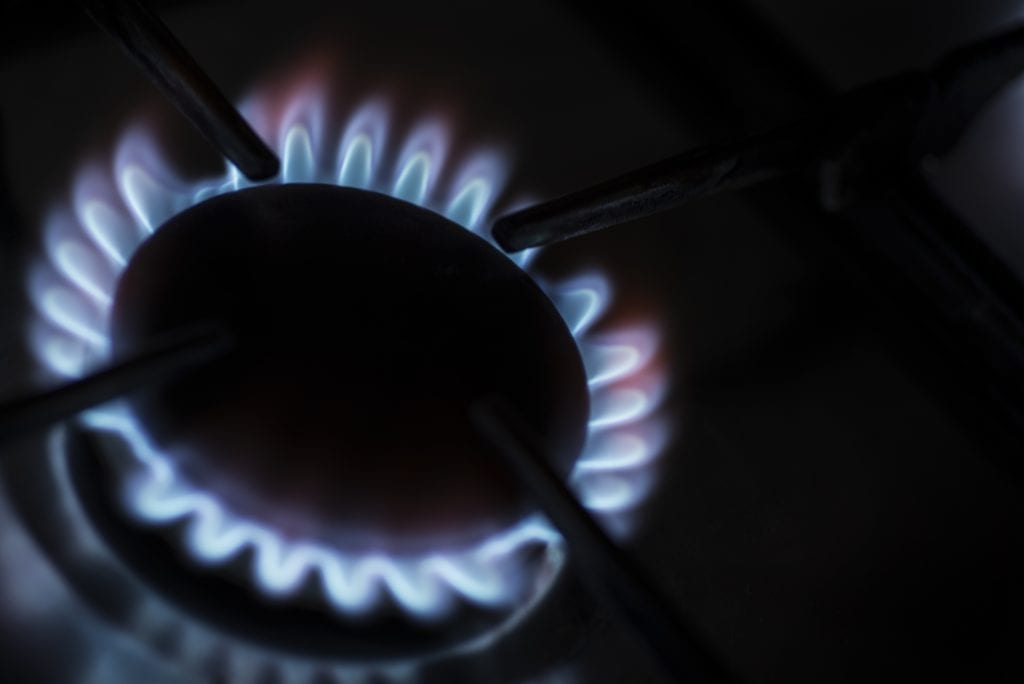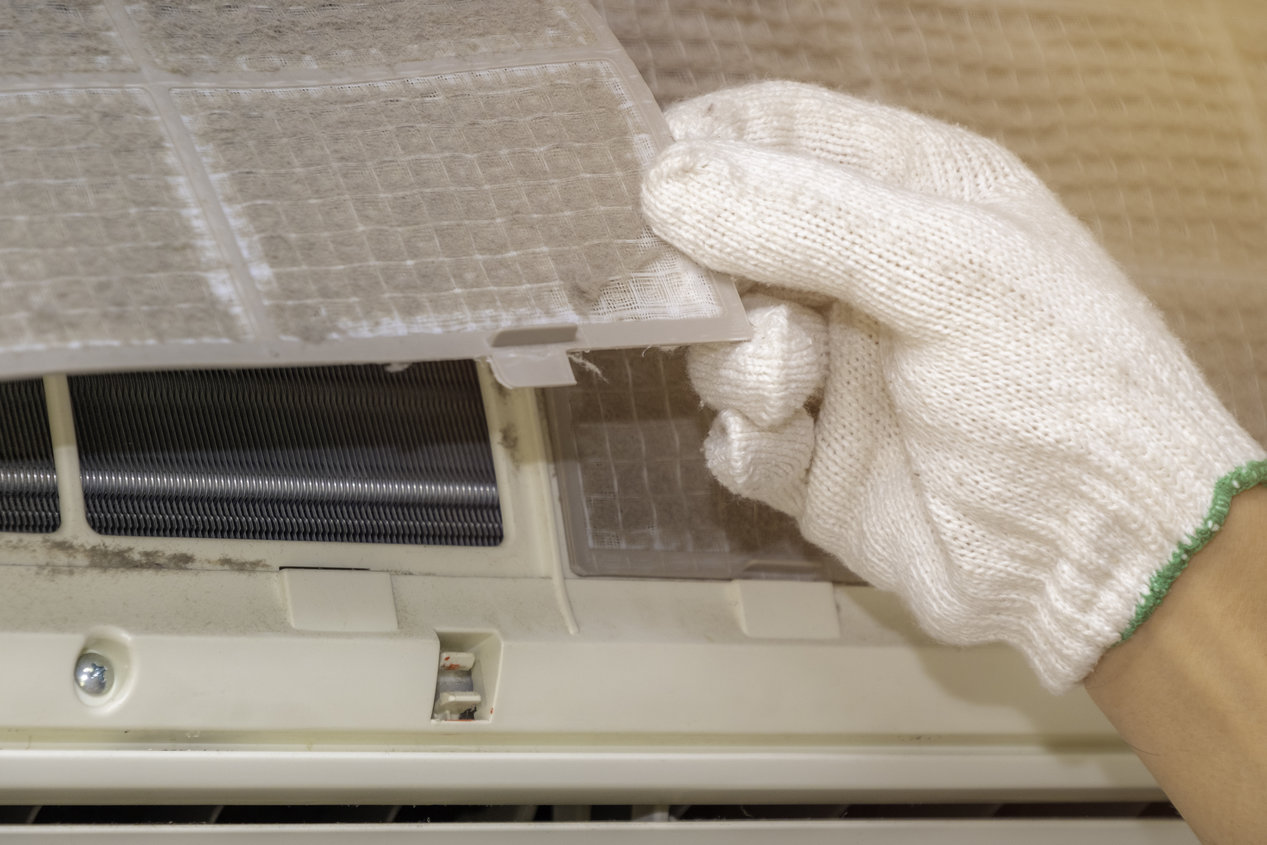Both residential and commercial HVAC systems serve the same purpose: to cool, heat, and ventilate. However, as you would expect, commercial or corporate HVAC does it on a much grander scale. They also vary in terms of mechanisms and parts.
What is an HVAC system supposed to do?
All HVAC systems strive to keep temperatures comfortable, which is generally around 72 degrees Fahrenheit. Additionally, they aim to keep indoor humidity consistent at 40-60 percent and air quality high, with CO2 less than 1,000PPM (Parts Per Million). That means that of one million gas molecules 1,000 would be carbon dioxide, and the other would be other gases.
Although there are different types of commercial HVAC systems, they all operate similarly:
- Air conditioner units lower temperatures by expelling hot air through HVAC refrigeration or water-cooled systems.
- Heating systems do the opposite, using water, radiator coils, or gas to heat the air.
- Ventilation systems use fans to circulate the air and pass it through filtration systems to clean it.
How do commercial HVAC systems differ from residential systems?
Residential systems are less complicated than commercial systems and differ significantly:
- Size: As you would expect, commercial systems are much larger than residential systems. They also have different thermostats, condenser fans, compressors, evaporators, blowers, and dampers.
- Location: A residential HVAC system is usually placed outside the house or on the roof, in some locales. A commercial system, on the other hand, maybe located in a building’s swamp cooler or on the roof. The latter is a great space saver, which also makes for better noise control and easier access for maintenance.
- Drainage: An individual AC unit may just have one drain or drain tray, but a commercial system has many pipes and drains to collect condensation.
- Mechanism: This depends on both the structure and location. A residential HVAC system is usually a standalone unit, but commercial systems are generally modular. The parts in a commercial system are located in one spot, making it easier to upgrade or replace them.
- Equipment: A commercial system is often massive and customized for the most efficient and heating for the size of the building and its use.
- Costs and maintenance: Commercial HVAC systems are much more expensive because of their complexity, and they should be installed, serviced, and maintained only by experienced commercial HVAC contractors and technicians.
What are the different categories of commercial HVAC systems?
Building size can often determine what type or combination of HVAC system works best to heat and cool it. Although there are variations, most can be narrowed down to three main categories:
- Single split system: Popular and affordable, this system is often found in smaller commercial buildings and allows for individual heating and cooling control of each space. If it’s an office building with a server room for computer equipment or a restaurant, this would be ideal. This system features a combination air conditioner/furnace that passes air through refrigerant lines and circulates it via air ducts. However, for each space you want to control, it requires a separate outdoor unit.
- Multi-split system: Up to nine indoor units can connect to one outdoor unit, resulting in better energy efficiency and a smaller outdoor footprint. Sensors detect temperature changes and can be adjusted as needed. However, multi-split systems take longer to install and can be more expensive.
- VRF (Variable Refrigerant Flow) or VRV (Variant Refrigerant Volume) systems: These work best in large mixed-use buildings, such as big office buildings or hotels, where both heating and cooling of different spaces could be needed at once.
Is there an industrial HVAC installation guide?
Many business owners know they need to get a new HVAC system, but they may have little knowledge of HVAC. They might also have trouble understanding the installation quotes or equipment requirements they get from commercial heating contractors. If they follow a few guidelines, they may be more confident when choosing a contractor and/or commercial HVAC system:
- Ask for a complete breakdown of costs. When you talk to potential contractors, have them submit price quotes that cover all aspects of installation, from start to finish.
- Learn about the latest heating and cooling technology, system types, and manufacturers. Compare systems, costs, and benefits.
- Remember to include the cost of ductwork in your installation budget. Ductwork and piping can add a lot to installation costs, so you need to budget for them if you can’t use existing ducts and pipes.
- Budget for system controls, such as thermostats. Depending on your building’s size, you could need dozens—or hundreds—of thermostat control points.
- Talk to your contractor about regular maintenance. Getting a new system installed can be costly, but not planning for regular maintenance can make it even more expensive. Ask your contractor if they guarantee their parts and labor and if they include scheduled maintenance services.
How do you become HVAC technician?
You can enroll in a Coyne College HVAC program to get hands-on instruction from industry professionals who will teach you to install, troubleshoot, and service domestic and commercial HVAC-R systems. Earn your diploma in as little as 42 weeks. You’ll be prepared for a rewarding, in-demand career that O*NET OnLine reports will grow 11 percent—much faster than average for other jobs—through 2028. Illinois expects to see job growth of 13 percent.
Contact Coyne College Chicago today to get the HVAC training you need to succeed.




